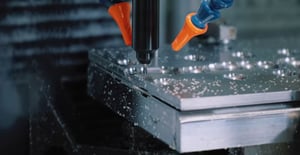
Optical and Mechanical Design
There is no substitute for a thorough understanding of the fundamentals.
At Apollo Optical Systems, our design is guided by the philosophy that the best design comes from a complete understanding of both the problem and the physical and technological principles that underlie a successful solution. We work with our customers through all phases of the development cycle from design through prototyping to final manufacturing and assembly.
Apollo has the in-house design expertise you need for a successful product. Having both optical and mechanical design under one roof allows Apollo to provide an integrated opto-mechanical solution to your problem. Extensive metrology capabilities give you the confidence you need.
Consider Apollo as your optical design manufacturing solution provider for:
- Design for manufacture
The unique combination of both design and production allows Apollo to produce systems that work as both software and hardware. - Design verification of an existing optical design
Apollo can provide an independent analysis of your pre-existing design, to ensure that it will meet your needs. - Design for imaging and illumination (non-imaging) systems, including:
Beam shaping optics, laser, and LED systems.
Our scientists and engineers have experience with the major optical (ZEMAX®, CODE V®, OSLO®) and mechanical (SOLIDWORKS®, AutoCAD®, Mastercam®, DIFFSYS®, PTC Creo®) design programs.
Custom Optical Capabilities
and Design Services
FAQ – Optical and Mechanical Design
1. What Are the Key Components of Optical Design?
Optical design involves the creation of optical systems, devices, and components using precision engineering, material selection, and advanced manufacturing techniques. The design phase is a vital part of the process to ensure that the final product meets performance and budgetary requirements.
2. How Does the Optical Design Process Work?
The optical design process systematically ensures the prototype meets the design requirements. This includes:
- Defining the system’s requirements like focal length, resolution, aberration limits, wavelength range, and field of view
- Selecting optical component arrangements and balancing the complexity, cost, and performance requirements
- Simulating performance and refining the design
- Selecting the lenses, mirrors, filters, coatings, and other elements to achieve desired performance
- Specifying dimensions, curvatures, thicknesses, and other parameters.
- Refining mechanical design for housing, mounts, and alignment mechanisms and performing a tolerance analysis
- Developing a prototype and validating its performance against design specifications.
- Manufacturing and assembling the optical components
- Performing quality control and testing the specifications
3. What Software Tools Are Commonly Used in Optical Design?
Optical designers and manufacturers use various software tools to design, analyze, simulate, and optimize optical systems. Some of these tools include:
- Ansys Zemax OpticStudio
- CODE V
- LightTools
- OSLO
- FRED
- TracePro
- MATLAB and Python with Optics Libraries
- SolidWorks with Optics Modules
4. What Are the Benefits of Using Optical Design for Manufacturing?
Optical design for manufacturing offers numerous benefits for many applications, including:
- Optimized performance for specific performance requirements, including resolution, field of view, and aberration control
- High levels of accuracy for high-precision applications like imaging, microscopy, lithography, and laser systems
- High customization for specific requirements in challenging industries like medical, aerospace, and telecommunications
- Compact and lightweight design for applications with tight restraints
- Precision control over how light behaves in a system, including focusing, collimation, diffraction, and beam shaping
- High-quality imaging with minimal distortion and aberrations
- Reduced energy consumption with efficient light manipulation
- Efficient production of identical optical components for mass production
- Cost-effective manufacturing processes with low per-unit costs
5. Can Optical Design for Manufacturing Help Reduce Costs?
Yes, optical design for manufacturing can reduce costs in several ways. The upfront costs can be high for design and prototyping, but the per-unit cost is reduced for mass production. Here are the ways optical design for manufacturing reduces costs:
- Cost-effective prototyping to identify design or performance issues early in the process
- High customization to match the exact requirements of an application
- Consistent production after a successful prototype
- Optimized material use to reduce waste and material costs
- Streamlined design process to develop units with low material and labor costs and a rapid timeline
6. How Important Is Quality Control in Optical Design and Manufacturing?
Quality control is essential to the entire optical design and manufacturing process. It ensures the optical components meet the desired specifications and performance requirements without aberrations and defects. With components designed for mass production, quality control is essential to producing identical parts that meet expected standards, affecting costs and brand reputation.
7. What Materials Are Commonly Used in Optical Manufacturing?
The materials used in optical manufacturing are crucial to achieving the desired performance of optical components. The common materials include:
- Optical glasses
- Crystalline materials
- Plastics and polymers
- Semiconductor materials
- Chalcogenide glasses
- Dielectric coatings
- Ceramics
- Metal coatings
8. How Do I Choose the Right Optical Design and Manufacturing Partner for My Project?
Choosing the right partner is a crucial step in ensuring the success of the finished product. Working with a partner with the expertise, capabilities, and resources to meet the project requirements and deliver high-quality optical systems is essential.
9. What Are Some Common Challenges in Optical Design and Manufacturing, and How Can They Be Addressed?
Optical design and manufacturing involves complex processes that come with many challenges. Aberration and performance issues are the biggest challenges, but they can be addressed through thorough simulation and optimization in the design and testing phases. It’s also essential to select suitable materials for budget and application.
Optical systems also require tight manufacturing tolerances for accurate performance – which can be hard to achieve. Collaboration between the optical and mechanical engineering teams and precision equipment is crucial to balance the requirements.